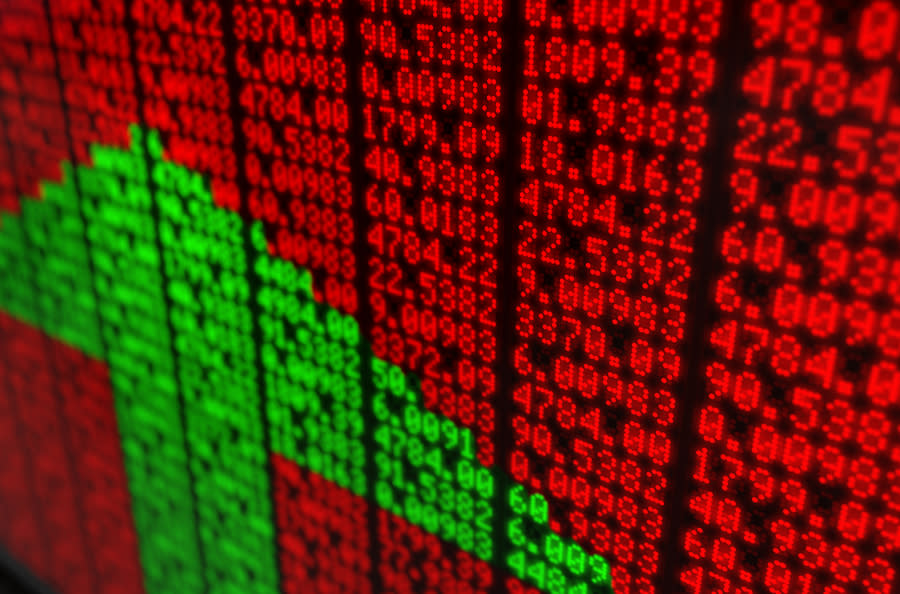Improve Your Retirement Income with These 3 Top-Ranked Dividend Stocks - February 07, 2020

Here's a revealing data point: older Americans are scared more of outliving wealth than of death itself.
Also, retirees who have constructed a nest egg have valid justifications to be concerned, since the traditional ways to plan for retirement may mean income can no longer cover expenses. Some retirees are now tapping their principal to make a decent living, pressed for time between decreasing investment balances and longer life expectancies.
Retirement investing approaches of the past don't work today.
Years ago, investors at or close to retirement could put money into fixed-income assets and depend on appealing yields to generate consistent, solid pay streams to fund a comfortable retirement. 10-year Treasury bond rates in the late 1990s floated around 6.50%, but unfortunately, those days of being able to exclusively rely on Treasury yields to fund retirement income are over.
That means if you had $1 million in 10-year Treasuries, the difference in yield between 1999 and today is more than $1 million.
Today's retirees are getting hit hard by reduced bond yields - and the Social Security picture isn't too rosy either. Right now and for the near future, Social Security benefits are still being paid, but it has been estimated that the Social Security funds will be depleted as soon as 2035.
How can you avoid dipping into your principal when the investments you counted on in retirement aren't producing income? You can only cut your expenses so far, and the only other option is to find a different investment vehicle to generate income.
Invest in Dividend Stocks
We feel that these dividend-paying equities - as long as they are from high-quality, low-risk issuers - can give retirement investors a smart option to replace low-yielding Treasury bonds (or other bonds).
For example, AT&T and Coca-Cola are income stocks with attractive dividend yields of 3% or better. Look for stocks like this that have paid steady, increasing dividends for years (or decades), and have not cut their dividends even during recessions.
One way to identify suitable candidates is to look for stocks with an average dividend yield of 3%, and positive average annual dividend growth. Many stocks increase dividends over time, helping to offset the effects of inflation.
Here are three dividend-paying stocks retirees should consider for their nest egg portfolio.
Cedar Realty Trust (CDR) is currently shelling out a dividend of $0.05 per share, with a dividend yield of 7.25%. This compares to the REIT and Equity Trust - Other industry's yield of 4.06% and the S&P 500's yield of 1.75%. In terms of dividend growth, the company's current annualized dividend of $0.2 is flat compared to last year.
Kellogg (K) is paying out a dividend of 0.57 per share at the moment, with a dividend yield of 3.59% compared to the Food - Miscellaneous industry's yield of 0.26% and the S&P 500's yield. Taking a look at the company's dividend growth, its current annualized dividend of $2.28 is up 1.79% from last year.
Currently paying a dividend of 0.3 per share, NRG Energy (NRG) has a dividend yield of 3.17%. This is compared to the Utility - Electric Power industry's yield of 2.69% and the S&P 500's current yield. Looking at dividend growth, the company's current annualized dividend of $1.2 is flat compared to last year.
But aren't stocks generally more risky than bonds?
The fact is that stocks, as an asset class, carry more risk than bonds. To counterbalance this, invest in superior quality dividend stocks that not only can grow over time but more significantly, can also decrease your overall portfolio volatility with respect to the broader stock market.
An advantage of owning dividend stocks for your retirement nest egg is that numerous companies, particularly blue chip stocks, raise their dividends over time, helping alleviate the impact of inflation on your potential retirement income.
Thinking about dividend-focused mutual funds or ETFs? Watch out for fees.
If you're thinking, "I want to invest in a dividend-focused ETF or mutual fund," make sure to do your homework. It's important to know that some mutual funds and specialized ETFs charge high fees, which may diminish your dividend gains or income and thwart the overall objective of this investment strategy. If you do want to invest in fund, research well to identify the best-quality dividend funds with the least charges.
Bottom Line
Seeking steady, consistent income through dividends can be a smart option for financial security in retirement, whether you invest in mutual funds, ETFs, or in dividend-paying stocks.
Generating income is just one aspect of planning for a comfortable retirement.
To learn more ways to maximize your assets - and avoid pitfalls that could jeopardize your financial security - download our free report:
Will You Retire a Multi-Millionaire? 7 Things You Can Do Now
This helpful guide offers our viewpoints about strategic retirement investment planning, based on decades of experience helping our clients prepare for financial security during their golden years. Get Your FREE Guide Now
Cedar Realty Trust, Inc. (CDR) : Free Stock Analysis Report
NRG Energy, Inc. (NRG) : Free Stock Analysis Report
Kellogg Company (K) : Free Stock Analysis Report
To read this article on Zacks.com click here.
Zacks Investment Research

 Yahoo Finance
Yahoo Finance 